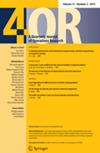Facial Reanimation of the Eye Using Neurovascularised Flap of Platysma
IF 2.6
4区 管理学
Q3 OPERATIONS RESEARCH & MANAGEMENT SCIENCE
引用次数: 0
Abstract
Background: Dynamic reanimation is usually required to restore blink function in patients with chronic facial paralysis. In which case, platysma myocutaneous flap (PMF) is a good choice compared to gracilis flap. Platysma is a thin, pliable flap with matching skin colour to the eyelids. Despite this, it is underused. Aim: To investigate the neurovasculature of platysma in order to find a common “window” containing nerves and blood vessels supply which is present in every individual. This will aid the plastic surgeons to reconstruct the neurovasculature of the flap for grafting onto the eyelids. Methods: 3 fresh cadaver necks were dissected from 1 males and 2 females, aged 75-88 years old; (n=6 platysmas). 43 squared specimens (measuring 1.5cm x 1.5cm) surrounding any potential neurovascular structures were cut out, processed and analysed under high power microscope to confirm the presence of nerves and blood vessels. We also reviewed literature dated from 1999 to 2011. Original Research Article Lim et al.; OR, 14(1): 40-57, 2021; Article no.OR.63505 41 Results: From the literature reviewed, the authors concluded that PMF provided excellent functional and aesthetic outcome. In this study, we discovered a “window” flap (ranging from "2.5cm x 3cm‟ to "8cm x 10cm‟) bilaterally on each cadaver. This window is supplied by submental branch of facial artery, drained by facial vein, anterior and external jugular veins, and extensively innervated by cervical branch of facial nerve. Conclusion: We strongly advocate the use of PMF “window” by plastic surgeons in dynamic eyelids reanimation.应用颈阔肌神经血管皮瓣重建眼部面部
背景:慢性面瘫患者通常需要动态再激活来恢复眨眼功能。在这种情况下,阔肌皮瓣(PMF)是一个很好的选择相比股薄肌皮瓣。颈阔肌是一种薄而柔韧的皮瓣,其皮肤颜色与眼睑相匹配。尽管如此,它仍未得到充分利用。目的:探讨颈阔肌的神经血管系统,寻找每个个体都存在的包含神经和血管供应的共同“窗口”。这将有助于整形外科医生重建皮瓣的神经血管系统以移植到眼睑上。方法:解剖3具新鲜尸体颈部,男1例,女2例,年龄75 ~ 88岁;(n = 6阔肌)。在任何潜在的神经血管结构周围切除43个平方标本(1.5cm x 1.5cm),在高倍显微镜下进行处理和分析,以确认神经和血管的存在。我们还回顾了1999年至2011年的文献。Lim et al.;;农业学报,14(1):40-57,2021;文章no.OR。结果:从文献综述中,作者认为PMF具有良好的功能和美观效果。在本研究中,我们在每具尸体两侧发现了一个“窗口”皮瓣(范围从“2.5cm × 3cm”到“8cm × 10cm”)。该窗由面动脉颏下支供给,由面静脉、颈前静脉和颈外静脉引流,广泛受面神经颈支支配。结论:我们强烈建议整形外科医生使用PMF“窗口”进行动态眼睑再生。
本文章由计算机程序翻译,如有差异,请以英文原文为准。
求助全文
约1分钟内获得全文
求助全文
来源期刊

4or-A Quarterly Journal of Operations Research
管理科学-运筹学与管理科学
CiteScore
3.80
自引率
5.00%
发文量
26
审稿时长
6 months
期刊介绍:
4OR - A Quarterly Journal of Operations Research is jointly published by the Belgian, French and Italian Operations Research Societies. It publishes high quality scientific papers on the theory and applications of Operations Research. It is distributed to all individual members of the participating societies.
 求助内容:
求助内容: 应助结果提醒方式:
应助结果提醒方式:


